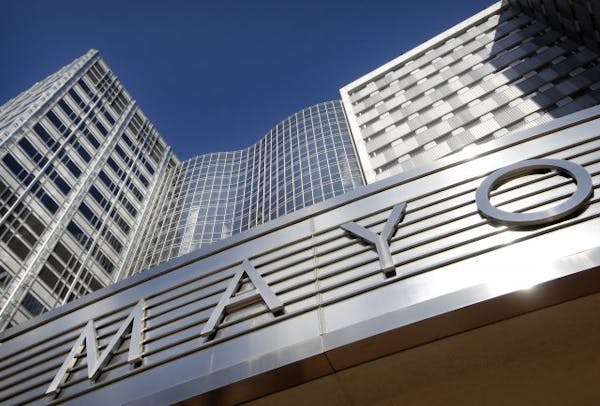Partnerships are never easy — just ask Ginger Rogers, who had to do on skates everything Fred Astaire did, only backwards. But when it works, it's magical! Mayo and Rochester have had a similar partnership, though in this case, neither is skating backwards. Rather, both are looking forward 10 or 20 or perhaps a hundred years.
Believe or not, the weather was a major factor in kick-starting the Mayo-Rochester partnership. In 1883, an F5 tornado struck Rochester, killing 37 and injuring 200. Only three hospitals existed outside of the Twin Cities, none in Rochester, so victims were attended to in the local dance hall.
The Sisters of St. Francis did their best but soon realized that what Rochester needed was a hospital. They set about this mission by promising William W. Mayo that they would build a hospital if he would provide clinical services. He consented, provided they could raise the capital.
The funds were given by the good people of Rochester. A partnership was born. Two sons later (Will and Charles), a medical model was born. Today, the model and the partnership are world-class. But in the competitive world of business, and especially health care, there are no guarantees. Frankly, Mayo can't sit on its assets. It has to leverage them to create a new future.
Rochester's leadership and citizens trust Mayo to do what it says: Build a $5.6 billion complex for its delivery of care, research and education. To make this happen, the partnership is seeking $525 million in state bonding proceeds that would be generated by the increase in state tax receipts — sales and wages, mainly.
I once lived in a town about 200 miles north of Rochester. By the late 1800s, virtually all the white and red pine had been clear-cut, and the village of about 1,000 faced extinction. There was no economic reason for being.
Then a few leaders fastened upon the idea of harnessing the rapids of the Mississippi River, much like St. Anthony had done to power the grindstones that turned wheat into flour.
To build a dam would cost the tidy sum of $7,400, which was an astronomical amount, given that the combined payroll of all the citizens was less than $1,400. But on Christmas Eve, the 61 voters unanimously approved the bonding to build the dam. Soon thereafter, a paper machine was built.
Today, the paper machines in Grand Rapids are world-class, and employees have enjoyed five generations of prosperity, even in the depths of the Great Depression.
So what's the point? Citizens, acting in partnership with government, identified an asset and created opportunity for thousands of future young people and an economic reason for the community's existence.
This scenario is not unique to Rochester or Grand Rapids. It can, and has, played out in many other cities. But today, Rochester stands out as the most audacious and promising example.
Why would anyone commit $5.6 billion in a mid-sized city, surrounded by cornfields and trees, with a tempestuous river running through downtown? Consider these factors:
• Payment schemes, therapies and machines will change, but there will always be places where people seek health and longevity.
• Health care is high-tech. High-tech jobs are at the top of the pay scale. The state's largest employer of 40,000 thrives on highly educated workers.
• The Mayo model is solidly based on a triumvirate of functions: patient-centered care, research and education. This model will never "dead-end" in the manner suffered by the other Rochester (in New York) with Kodak and film.
The most controversial question about this partnership is whether state government should lend assistance. Legislators are especially perplexed, wondering: If we help Mayo and Rochester, won't others come at us for similar assistance?
How short can memory be? We just had an election, and virtually every candidate promised jobs, jobs, jobs. Mayo estimates it will add as many as 40,000 in Minnesota, doubling its employees.
Mayo and Rochester are asking for help to build the infrastructure to service the new construction. Who can dispute that government's rightful role is providing the roads, bridges and the like to service economic expansion?
One last thing to think about is "class." Mayo has not threatened to move out of state if it fails to get infrastructure funding. It's been a class act, unlike a few professional-sports team owners. Sure, Mayo has many suitors for the expansion, but it will never pull up stakes — 20-story buildings are difficult to move.
The true significance of the Mayo-Rochester partnership is that it should stand tall as a model for other communities to identify their assets and leverage them to the maximum in partnership with highly capable partners. This could be the new Minnesota Miracle.
----------------------
Paul Olson, of St. Paul, is a former president of the Blandin Foundation. He is at pmolson27@hotmail.com.
The 'Civility Caucus'

Sports betting push at Legislature resorts to punitive leverage


